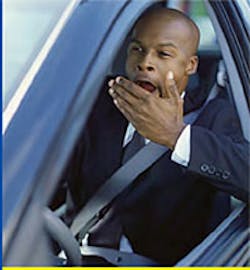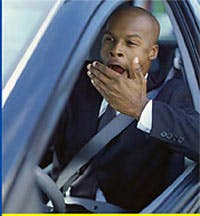The CDC set out to discern just how widespread “drowsy driving” really is by analyzing data from a set of questions about insufficient sleep administered through the BRFSS between 2009 and 2010. Among 147,076 respondents in 19 states and the District of Columbia (DC), some 4.2% reported falling asleep while driving at least one time during the previous 30 days – something that occurred more commonly among adults who reported usually sleeping six or fewer hours per night or who said they snored or “unintentionally” fell asleep during the day.
That’s got a lot of folks worried as the National Highway Traffic Safety Administration (NHTSA) estimated that 2.5% of fatal motor vehicle crashes (approximately 730 in 2009) and 2% of all crashes with nonfatal injuries (approximately 30,000 in 2009) involve drowsy driving.
The reason for the CDC’s involvement is that the agency said current data collection methods make it challenging to estimate the number of crashes that involve drowsy drivers – with some modeling studies estimating that 15% to 33% of fatal crashes might involve drowsy drivers.
The CDC’s research also indicated men were more likely to report drowsy driving than women (5.3% versus 3.2%) and that drowsy driving prevalence decreased with age, from below 4.9% among adults aged 18–44 years to 1.7% among those aged 65 years or older.
Non-Hispanic whites were less likely to report drowsy driving than other racial/ethnic groups (3.2% versus 6.1% for non-Hispanic blacks, 5.9% for Hispanics, and 6.0% for persons of other race/ethnicity) while Retired respondents (1.0%), students or homemakers (2.1%), and unemployed respondents (3.1%) were less likely to report drowsy driving than those who were employed (5.1%) or unable to work (6.1%).
Interesting, a person’s level of educational attainment isn’t associated whatsoever with drowsy driving, the CDC found.
Now, if that wasn’t enough, there’s another new study out – published in the Traffic Injury Prevention journal – that claims “digital billboards” attract and hold the gazes of drivers for inordinate amounts of time, leading to distracted driving and thus an increased risk of vehicle crashes. [My wonderful colleague Wendy Leavitt put a story together on this that you can read by clicking here.]
The risk of distraction is so high in the eyes of the Swedish government that it recently ordered the removal of all such digital billboards… and the U.S. is being urged to do the same.
It just goes to show that, even in the world of transportation, there’s no shortage of studies with all sorts of surprising findings!

